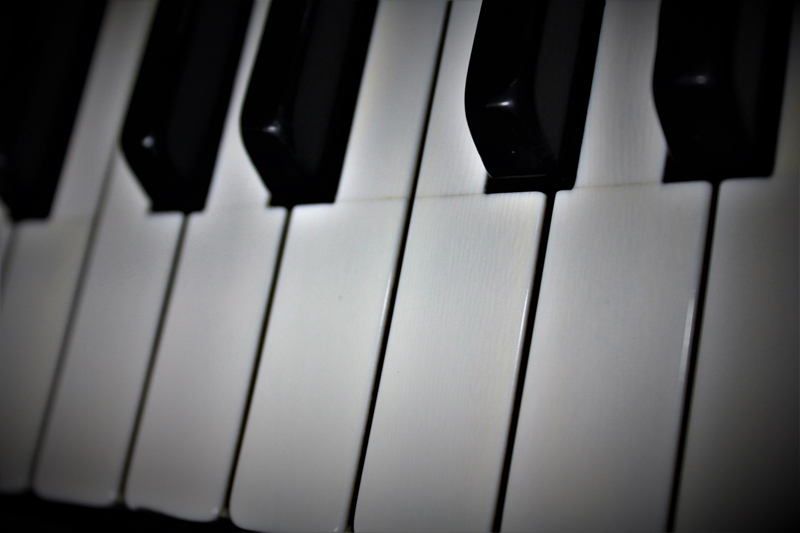We all know that popular phrase ‘tickling the ivories’ but how do we actually feel about it? The use of ivory is a hot topic around the World right now and the piano community must keep informed. We will give you the facts and history in this article and allow you to make your own mind up. Let us know your insights.
Pianos that pre-date the 1950s are unescapably linked to the universally distasteful era of mass hunting for the purpose of collecting ivory. Some of this hunting at that time may well have been legal in some African countries but most was illegal and overused to the detriment of Elephants everywhere.
Read further to learn more about the history of this iconic instrument and where the fashion for making ivory piano keys was born – rightly or wrongly.
History of Keyboard Instruments
As far back as the 1150s art works and records indicate that keyboard like instruments were starting to take precedence in people’s homes. Now in this time period the instruments recorded in no way resemble a modern piano but this was their heritage. These early versions of keyboard instruments would have included monochords and later clavichords which are considered piano ancestors.
The first recorded example of something more closely resembling the modern instrument we know today dates back to 1598. This record was a somewhat vague letter to the Duke of Modena and included an instrument described as a ‘piano e forte’ meaning it was capable of sounds both loud and soft. This in all likelihood was a harpsichord type instrument which does not include a hammer like action but this is when the modern piano instrument was being born.
Given we have stated that this was the 16th Century, it was not until the 18th century that the modern piano was becoming a popular instrument in the gentries drawing rooms. Coinciding with this period was the rapid expansion of colonialism and subsequently the desire for overseas rarities such as ivory. It was seen to be in abundance and seen to be luxurious for maintaining social standing among piers. Unfortunately for elephants, their ivory was not farmed or managed; it was overhunted for the next 200 years until the great depression of the 1920s. During this time with crashing wealth companies and customers wanted a cheaper solution to ivory keys. This was the beginning of plastic veneers that are used across all ranges today.
With drastically declining elephant numbers and World conservation pressures mounting, in 1989 there was a blanket ban on the use of ivory as new veneer for piano keys.
How can you tell if your Piano keys are ivory?
A lot of modern-day piano builders use plastic, although some brands use a special resin of a higher quality finish, which is more resistant to chipping and yellowing. If you have a new piano then rest assured that it will have either resin or plastic. However, if you have an older piano, there are ways you can tell if the keys are made from ivory. One way is to look for “veins” or what look like hairline cracks on the surface: ivory keys will have a fine line between the keytop and the stem, as they’re produced in three parts (see picture below).

Should you avoid antique pianos?
This depends largely on your own personal beliefs. Antique pianos are a thing of beauty both because of their sometimes elaborate cases to their ivory keys. Some pianists will argue that ivory keys give superior touch, feel and quality while playing an instrument while others cannot get past the hunting of days gone by. This will be a long debated subject within the piano community for years to come.
The truth of the matter is that if you own a piano pre-1950 and certainly pre 1920 then it will almost certainly have ivory keys – between 1950&1970 the chances are starting to lean towards plastic. If you have ivory keys then you shouldn’t shy away from replacing them with ivory keys. There is a large market in antique key replacements from broken up pianos that are better being used than collecting dust. Pianos will also hold their value better if replaced with ivory keys. That being said if you are adamant that you want to change a broken key to plastic then it is advised that you change every key to keep it aesthetically pleasing. A quote can be worked out by your piano technician for a job of this nature.
Staying Ethical
In keeping with this article we must highlight, if you hear of or consider buying a piano with modern post-1989 ivory keys then you should turn your back on it immediately because this is in fact banned.
98% of World famous concert pianists are using Steinway Pianos which use a white plastic in all their pianos. If it is good enough for the World’s best manufacturers and pianists then it must be said that there is no longer an overly strong argument for ivory keys having superior touch and feel.
Our advice would be to just be comfortable with the piano you buy. If you want an elegant case then you have to ask yourself are you happy with potentially having ivory on display in your home. If the answer is yes then go ahead with your purchase. These piano keys have already been made at a time when it was legal to do so, therefore there is no reason to feel you cannot follow through with it (pre-1989 of course).











